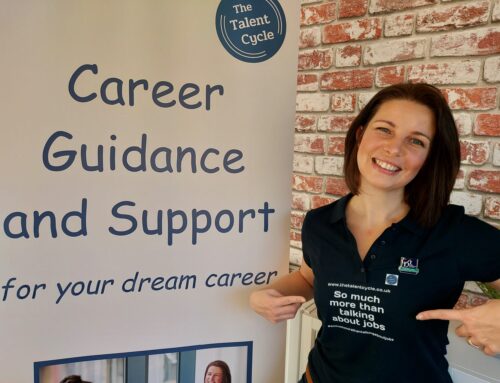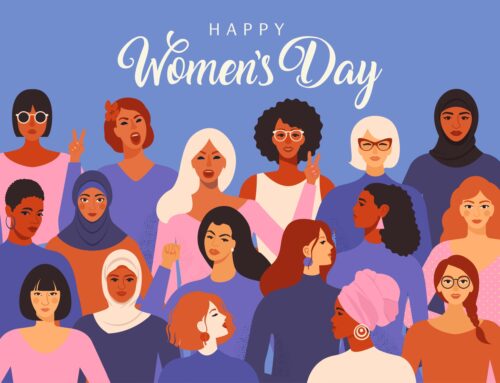‘What do you want to be when you grow up?’ It is hard to think of a more clichéd question in the context of career education and guidance. Many people still think of career decision-making in terms of picking a job to pursue post-education, which will then more or less define what the individual regards as their ‘career’. In a 21st-century context however, this rather linear image of career development no longer corresponds to how most people’s careers pan out.

The Corporate Ladder: RIP
The ‘death of the corporate ladder’ has been talked about by commentators for a number of years now; whether through economic turbulence, technological advances or greater social mobility, the ‘job for life’ is increasingly regarded as a thing of the past. Many of those reading this article may well recognise this in their own career histories. Given the increasingly evident truth that there is no longer any typical career ‘path’, how can careers leaders and careers advisers best prepare students for a world in which stable career ladders have been replaced by lateral career paths in an ever-more unpredictable world?
Planned Happenstance, or how to navigate non-linear careers
Gone are the days when school-based career guidance consisted of matching students to a job based on an assessment of their skills, traits, interests and likely qualifications, with the assumption being that that individual would then pursue this job as a ‘career’ for much – if not all – of their working lives. 21st-century careers leaders and careers advisers will instead want a more sophisticated skillset to help prepare students for a much less predictable and far more mutable job market. One theoretical approach that can very helpfully inform modern career education and guidance is the psychologist John Krumboltz’s ‘planned happenstance’. In a simple sense, planned happenstance places as much emphasis on the value of unplanned, chance opportunities in individuals’ career development as careful career planning. In Krumboltz’s words, planned happenstance is about being willing ‘to take actions to open up opportunities even when you don’t know the outcomes, to take advantage of chance events, to keep your options open, and to make the most of what life offers’.[1]
As liberating and even exciting as this sounds, this approach to career planning and development can seem to go against the grain of many of the messages imparted to students throughout school, college, university or even the workplace if they do an apprenticeship. After all, students are (quite rightly) encouraged to work hard, gain the best qualifications they can and make carefully considered choices at key transition points (e.g. choosing GCSEs, weighing up whether to go to college/university or do an apprenticeship, etc.), which sounds very much like working according to a plan. And yet planning is not entirely rejected by Krumholtz; he is clear that he is ‘not opposed to planning, but [does not] think you should stick to a plan that is not working for you anymore’.[2] Given the more complex workplace that we have been considering – and to which students will need to adapt in the coming decades once they have left compulsory education – it is important to help students understand that even the most thorough plans are at best provisional and being willing to adapt and change course is a vital skill. So how can school and college-based careers leaders and advisers incorporate these insights when planning careers programmes and delivering 1:1 or group guidance?
Preparing students to make their own luck in life
The Government’s Careers Strategy emphasises the vital importance of providing school and college students with opportunities to learn from encounters with professionals and employers. Encouraging professionals to share details of their own career development with students can help students recognise ways in which qualities such as curiosity, risk-taking, flexibility and – yes – exploiting chance encounters can be just as important as careful planning to the success of many individuals’ careers, sometimes more so. Careers Consultant Liz Medford cites the example of a stockbroker friend who found himself developing mussel farms in South America and eventually developing businesses worldwide, purely as a result of a conversation with a bus commuter over their shared love of fishing.[3] Having this awareness can also greatly enrich 1:1 or group career guidance. Helping students understand that there is not necessarily any such thing as a ‘job for life’ anymore and that they cannot plan for every chance encounter that they will face in their lives can remove a lot of the perceived pressure to ‘pick a job’ that many students feel as they approach key transition points in their educational journeys.
There are many other ways in which an imaginative careers leader may build the insights of planned happenstance theory into a career programme, but the following ideas may offer a starting point:
- Encourage students to research and draw the career journeys of people they admire (sports people, entrepreneurs, politicians, etc.). Encourage them to reflect on what qualities helped the person navigate their career successfully.
- Help students reflect on the personal qualities that will increasingly be needed to navigate multiple career transitions (flexibility, resilience, growth mindset, problem solving, etc.). Deliver sessions to develop such qualities as part of PSHE.
- Encourage students to identify ways in which they have successfully taken risks in their lives to date. Help them reflect on potential risks inherent in undertaking work experience, visiting universities, etc. and how to approach these with a positive mindset.
Sir Dominic Cadbury once said that ‘there is no such thing as a career path. It’s crazy paving and you have to lay it yourself.’ This advice is perhaps truer today than ever, but there is plenty that careers leaders and advisers can do to help students survive and even thrive in a rapidly changing, challenging and unpredictable world.
[1] Krumboltz, John D. and Al S. Levin, Luck is no Accident: Making the Most of Happenstance in Your Life and Career. 2nd ed. California: Impact Publishers (2010), p. 5.
[2] Ibid., p. 5.
[3] Careers and Employment Blog, University of Wellington: https://viccareers.com/2013/05/31/chance-encounters/ [Accessed 22/07/2019]
Oliver Jenkin is a Career Development Consultant at CSW Group with 11 years’ experience helping young people bring about positive changes in their educational and working lives. Oliver is a registered member of the Career Development Institute.





